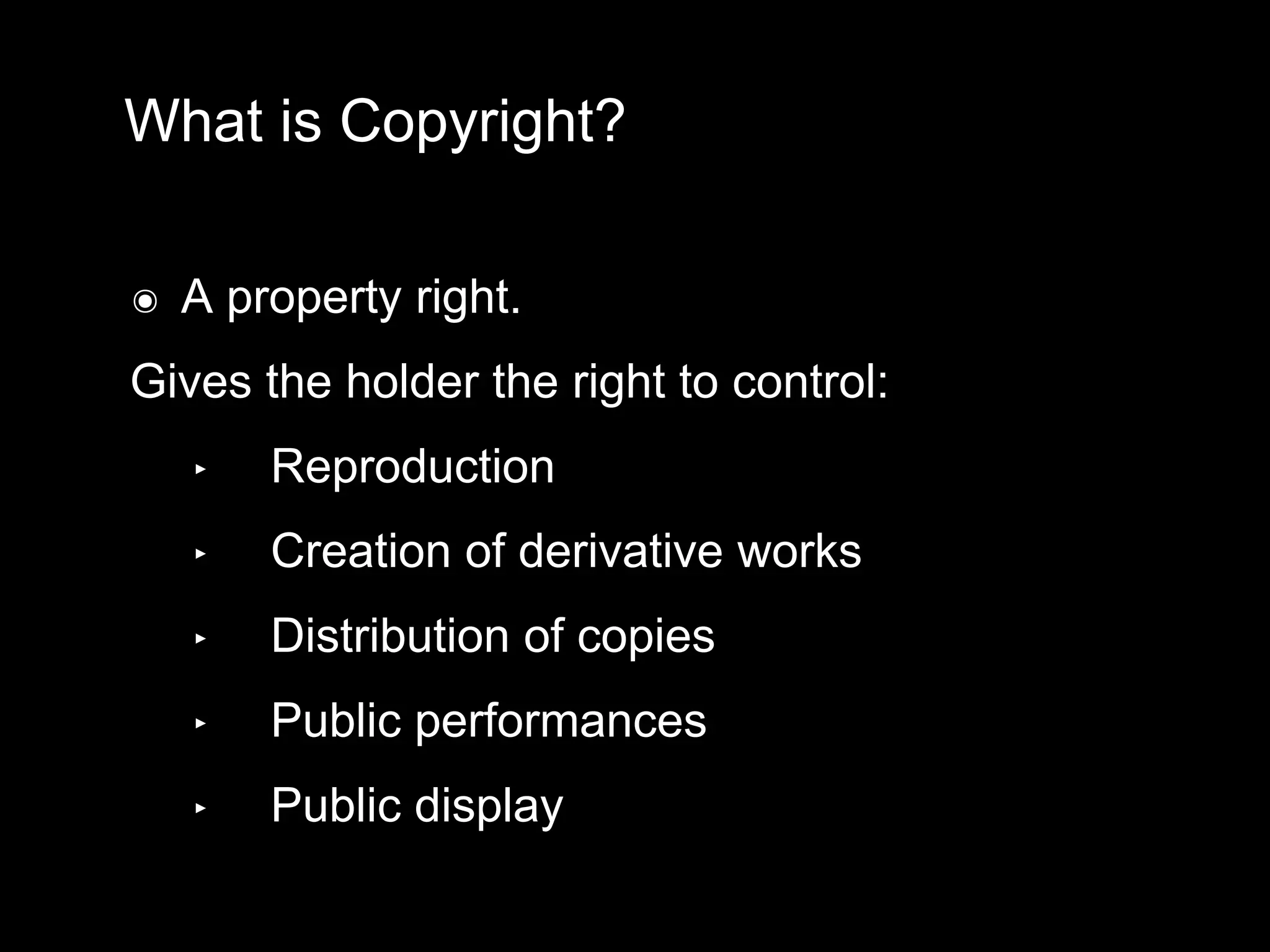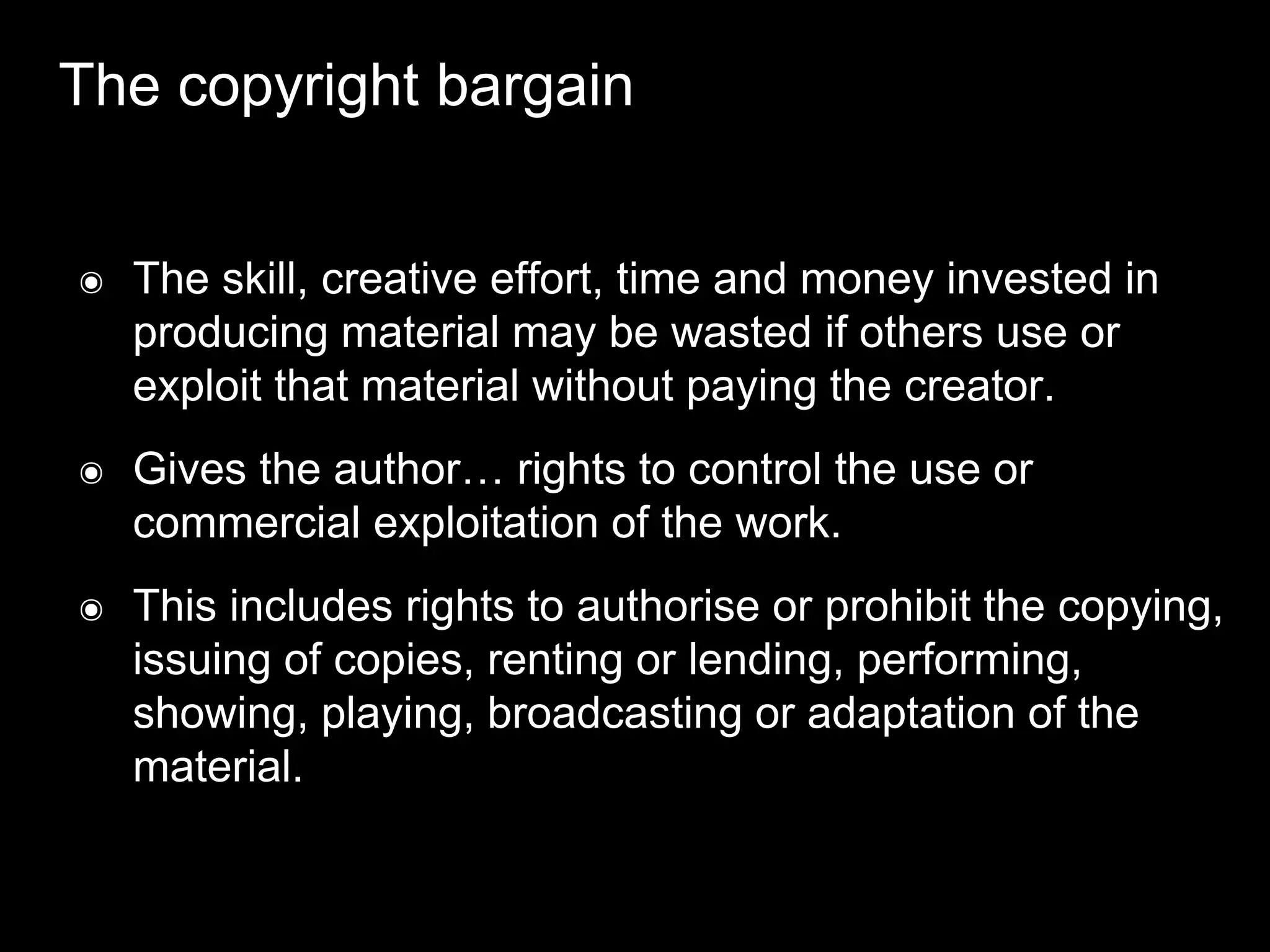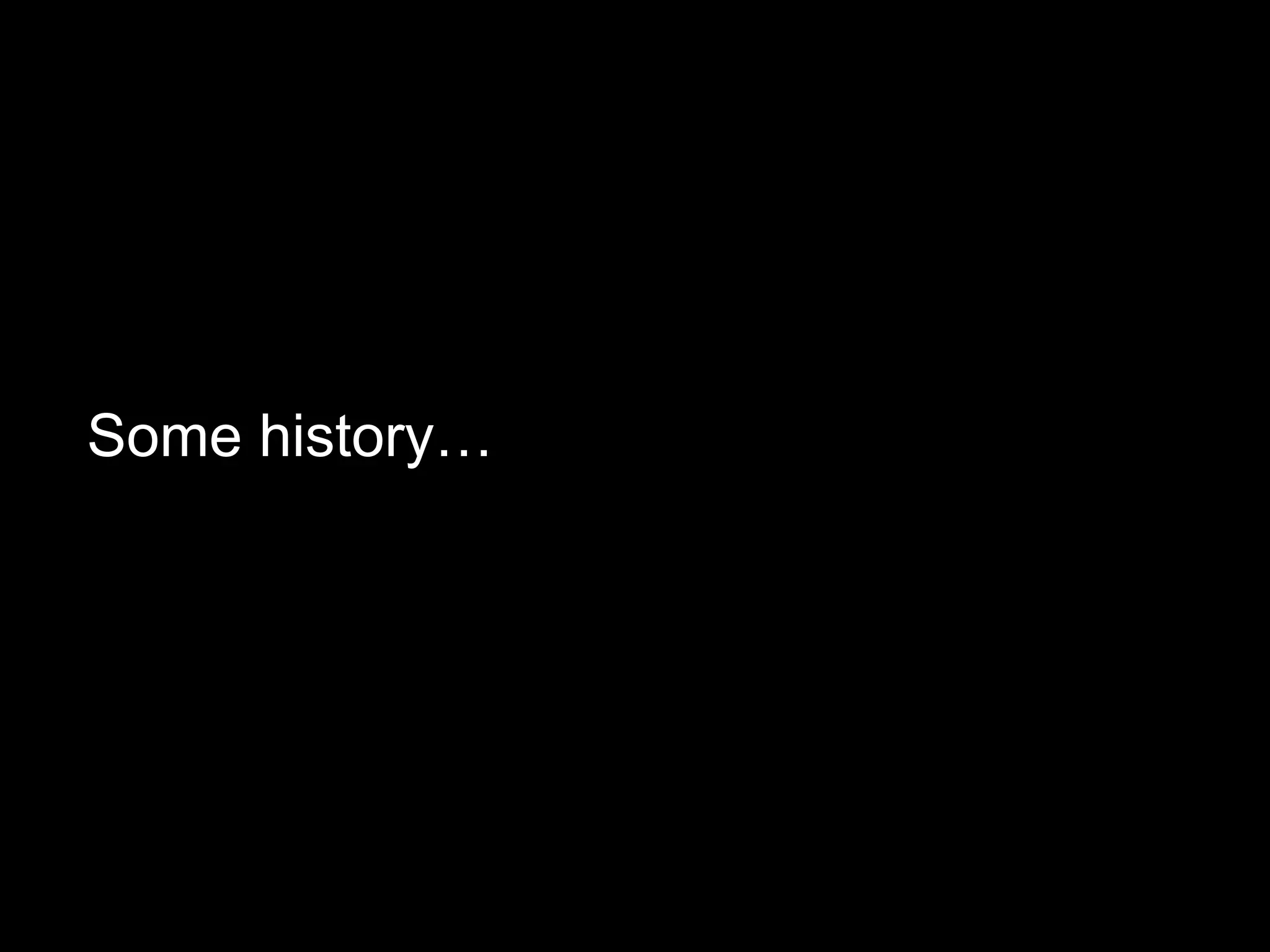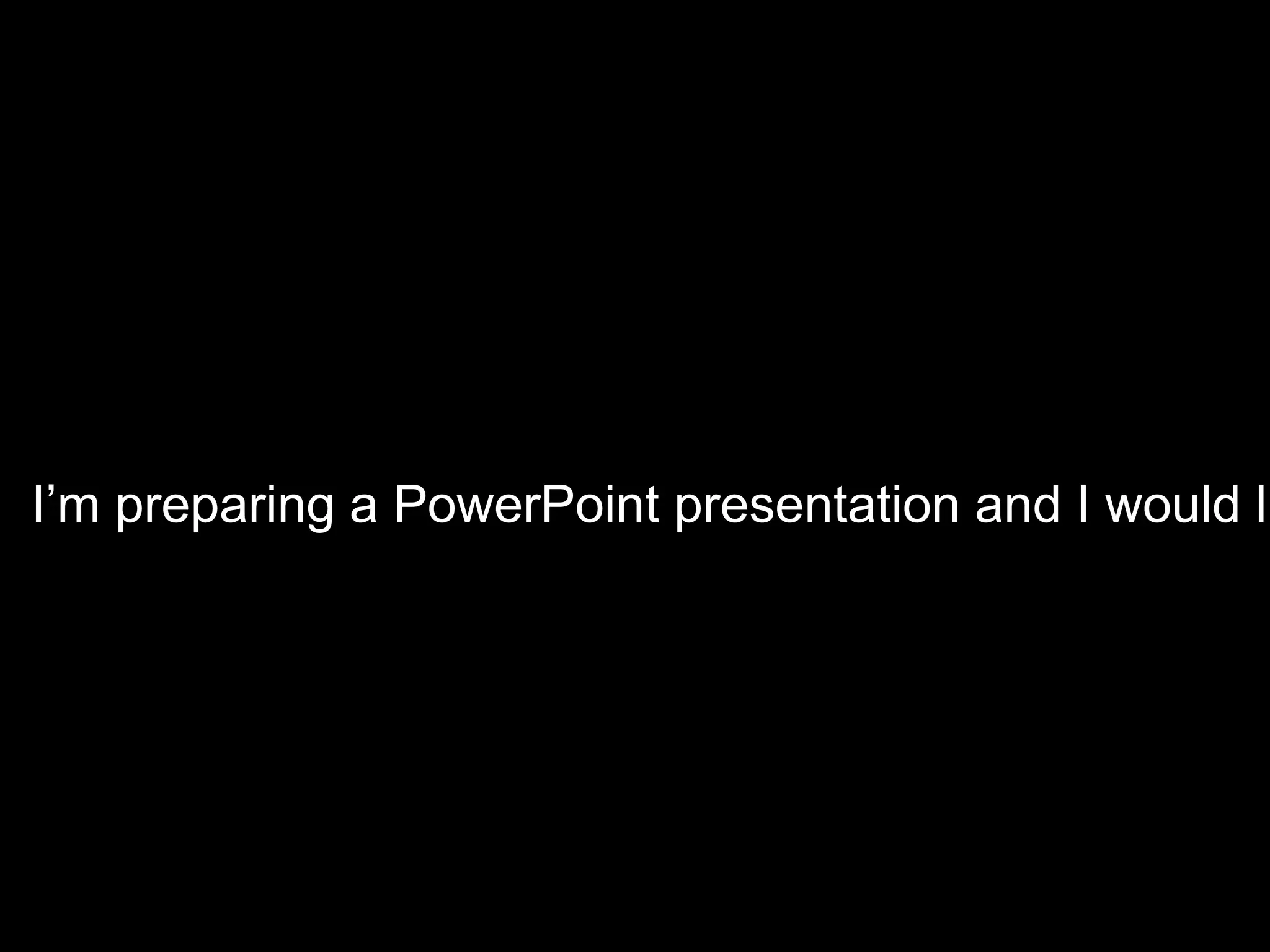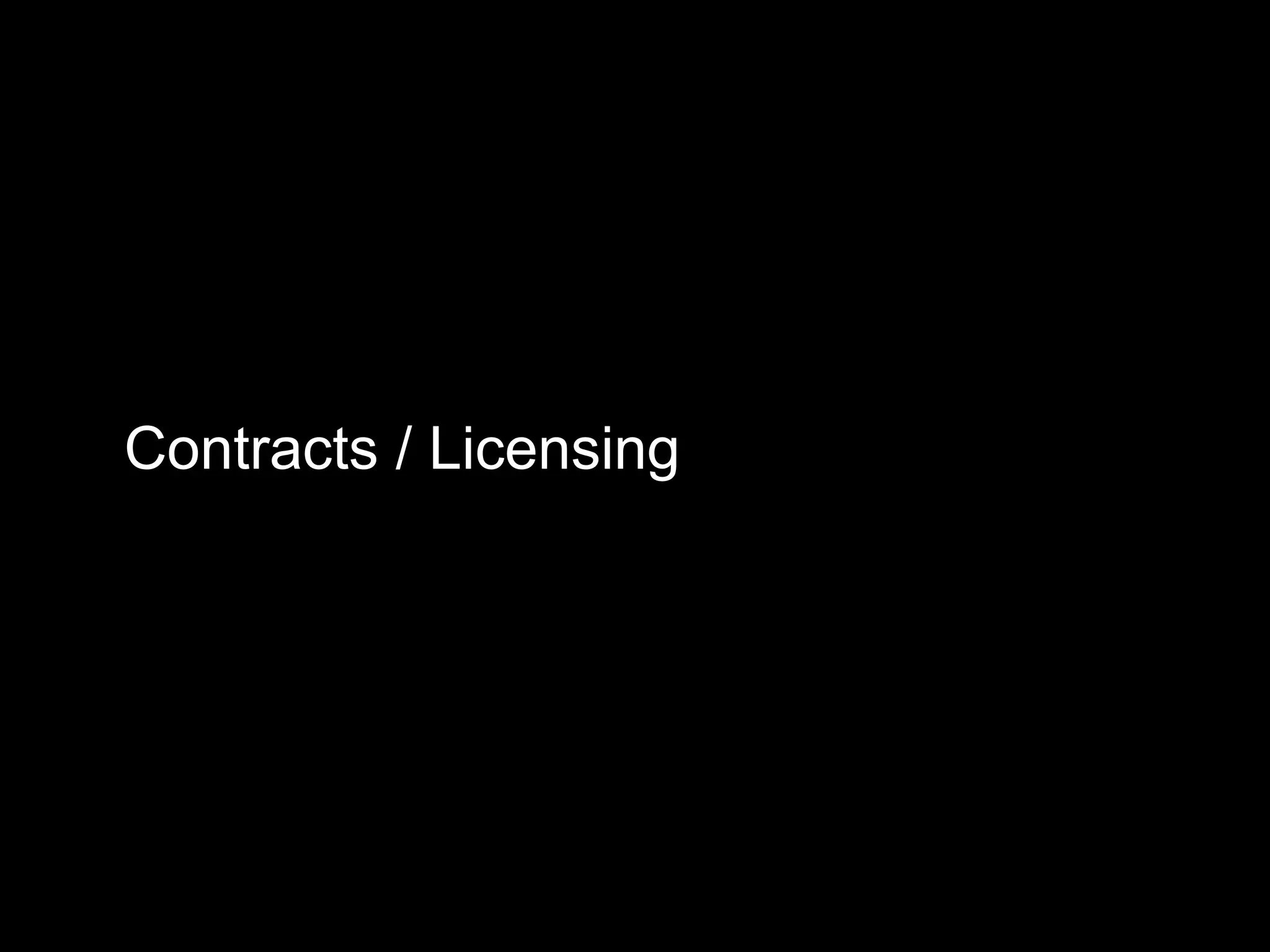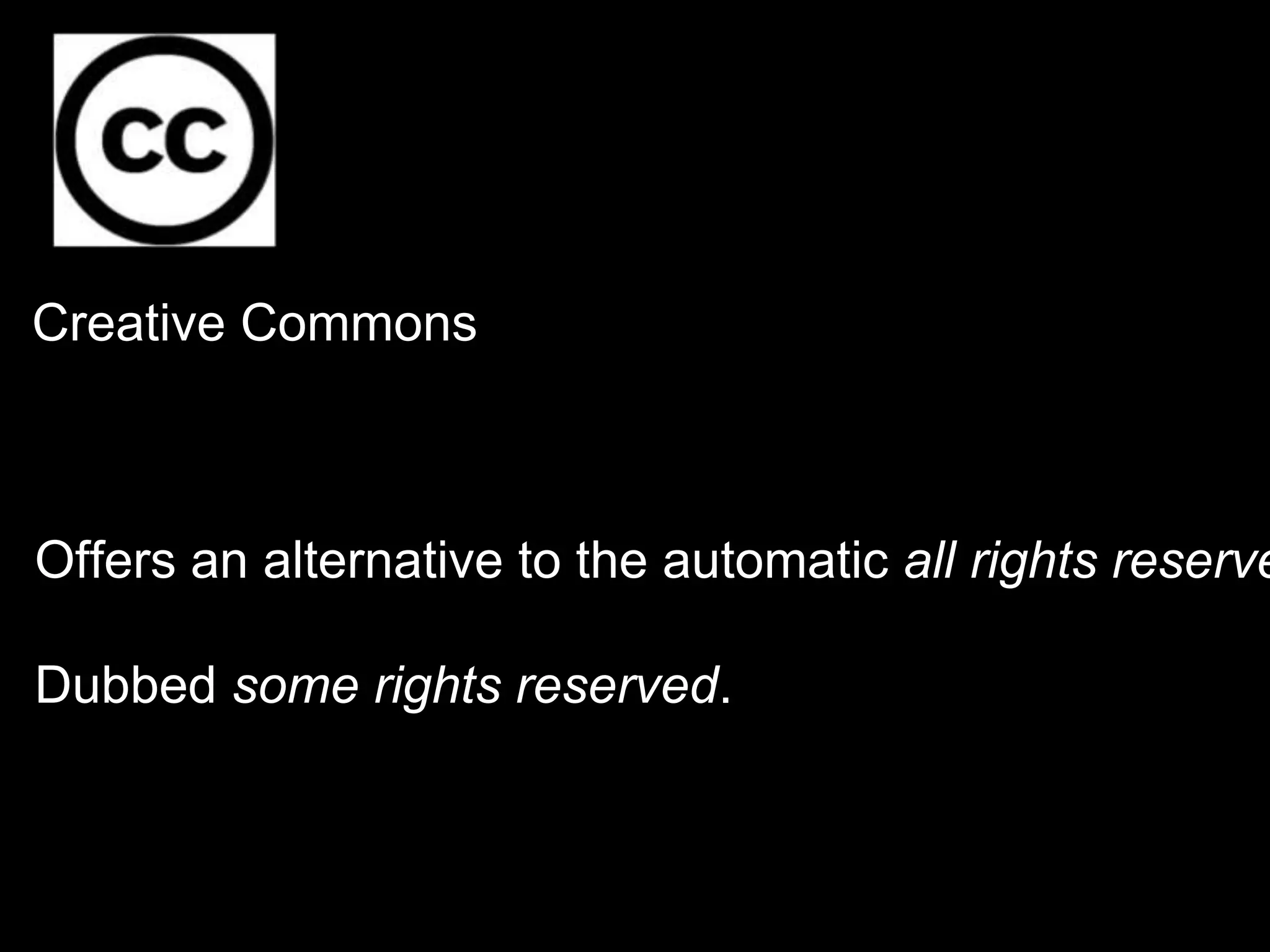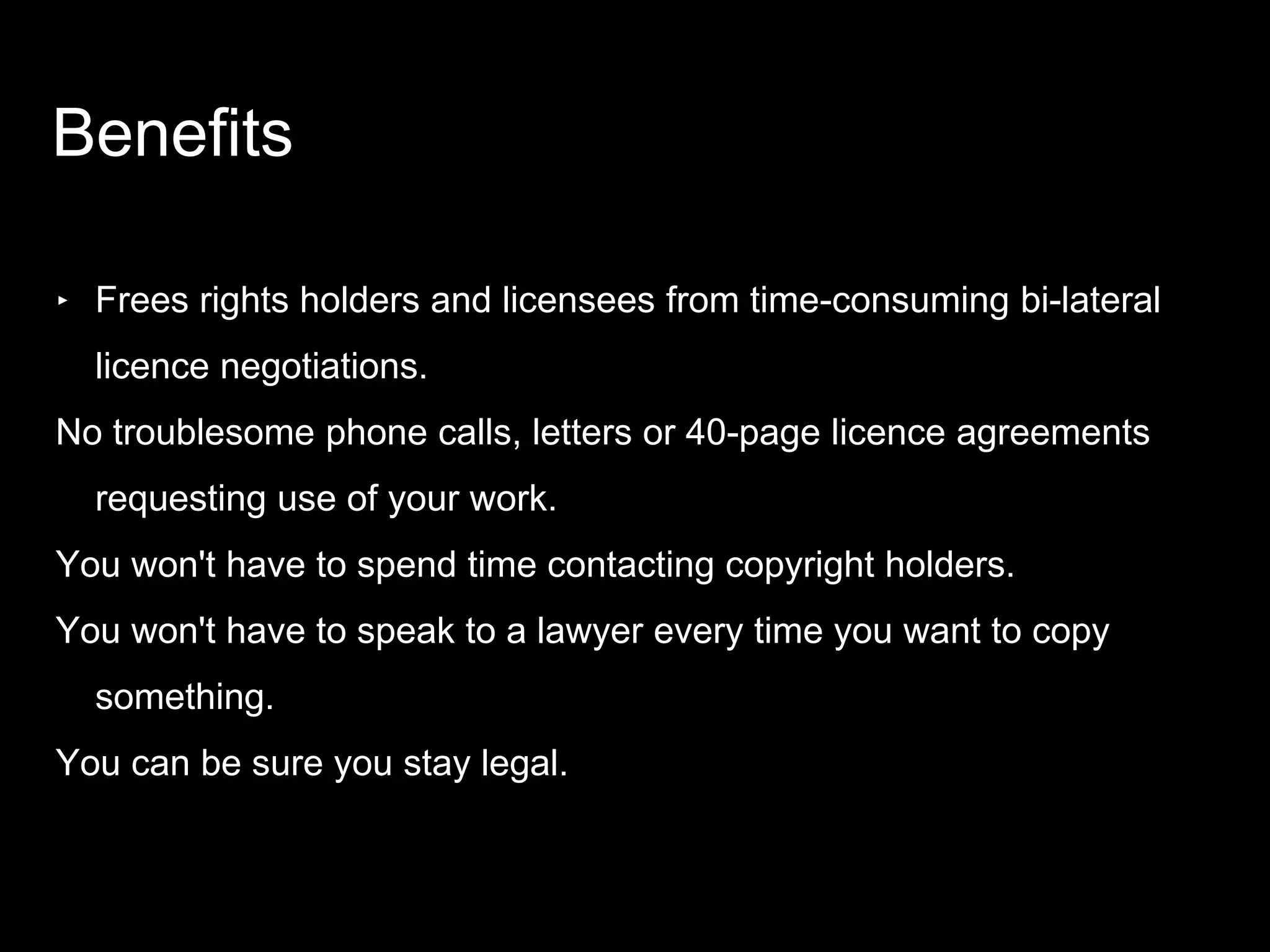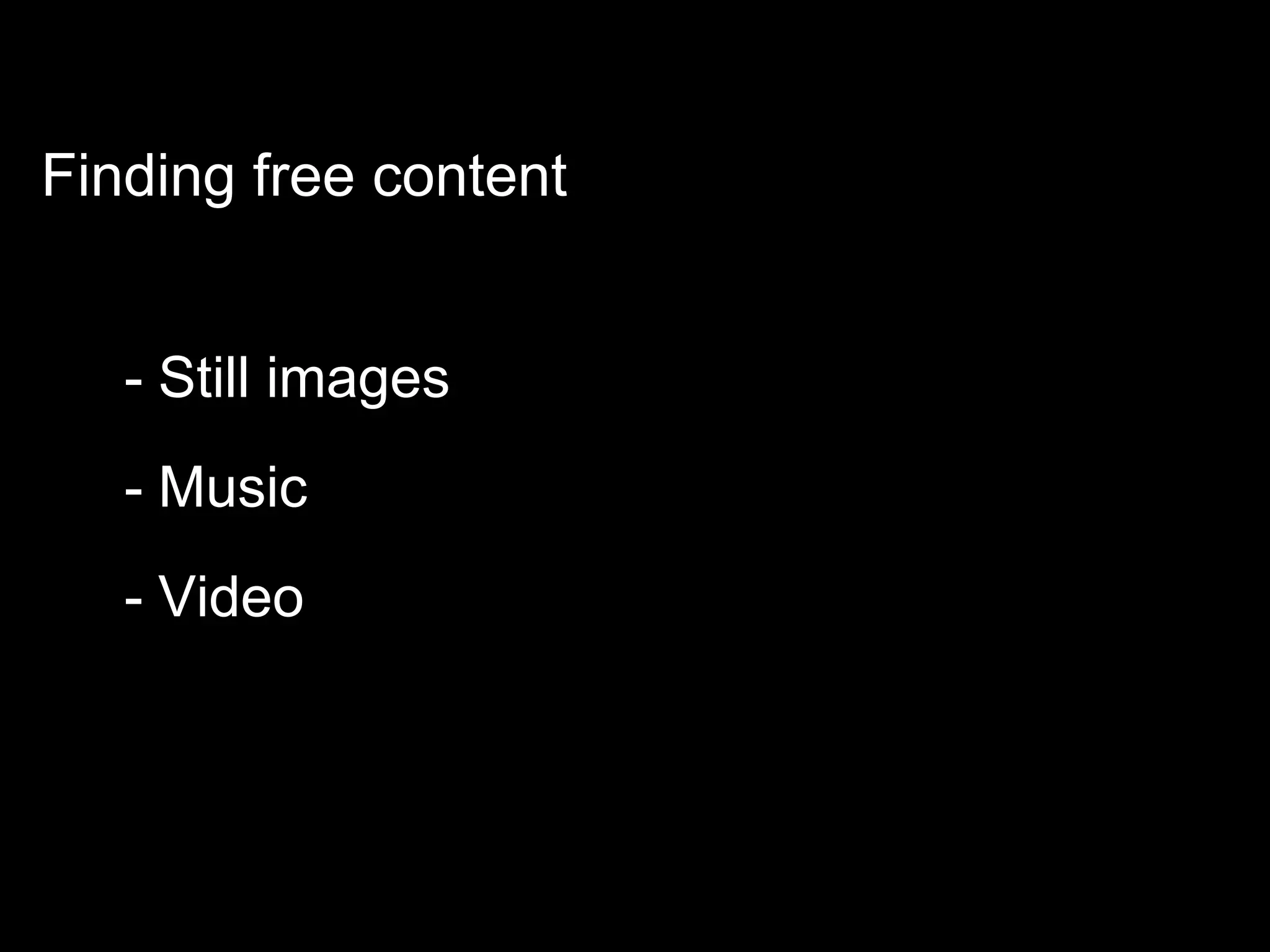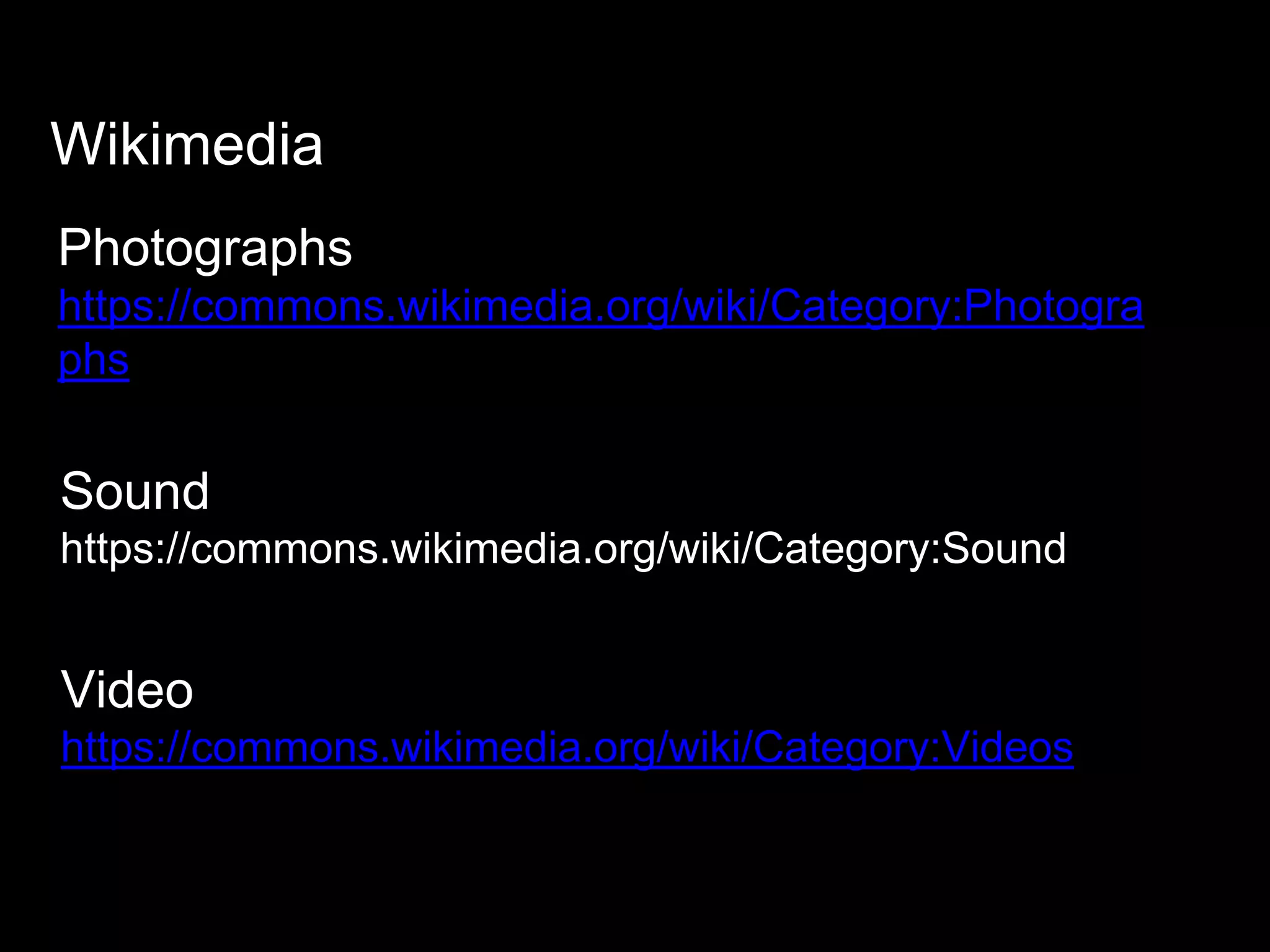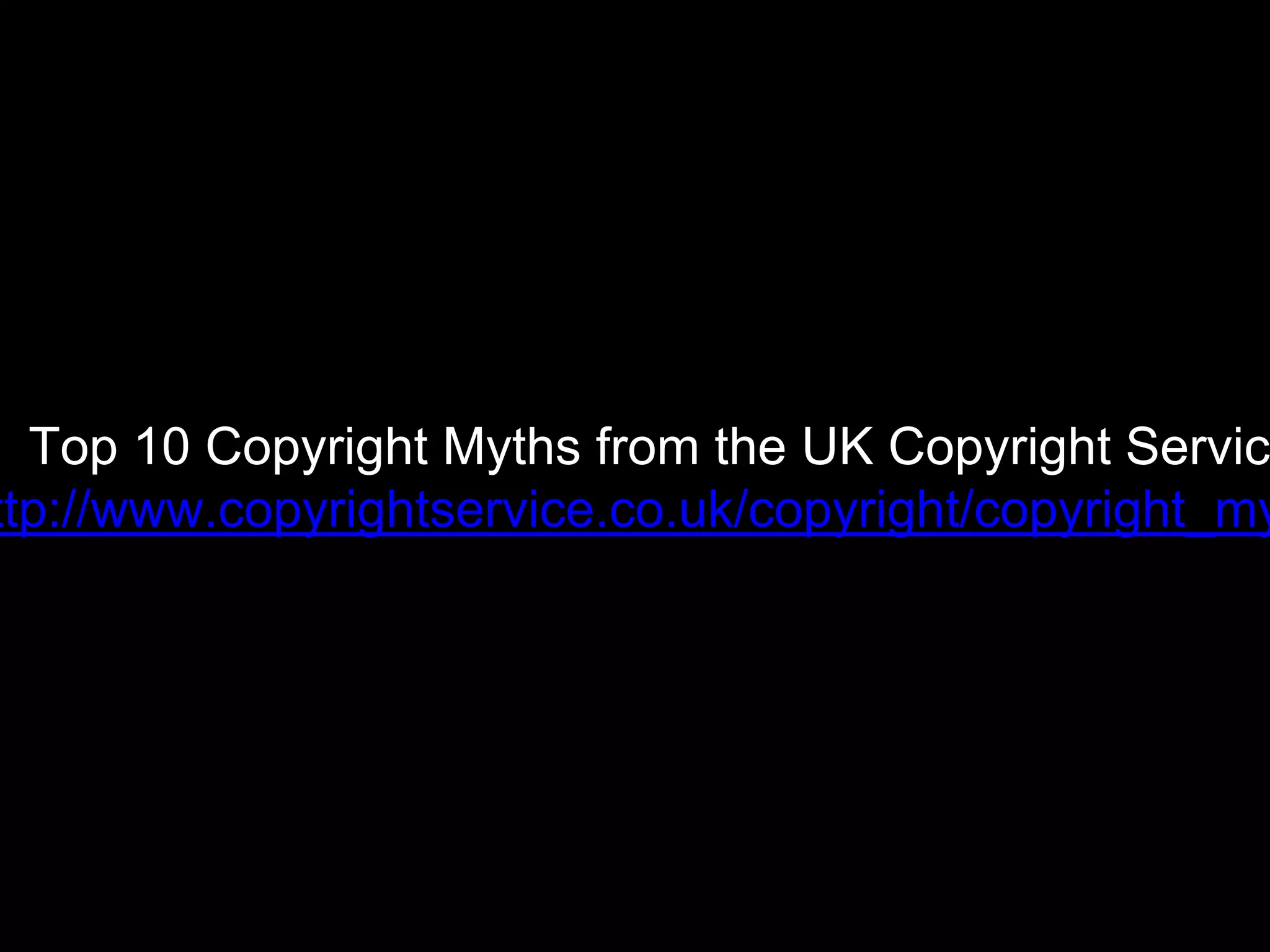This document discusses copyright and creative commons licensing. It begins with questions about what copyright is and isn't, then provides information on what types of work copyright covers and the meaning of public domain. The rest of the document discusses the purpose of copyright in encouraging creativity, how long copyright lasts, exceptions and limitations to copyright like fair use and fair dealing, and alternatives to traditional copyright like creative commons licensing. Creative commons licenses are explained, including the six types of CC licenses available in Scotland. The document provides guidance on assessing copyright risk and examples of analyzing copyright issues.


